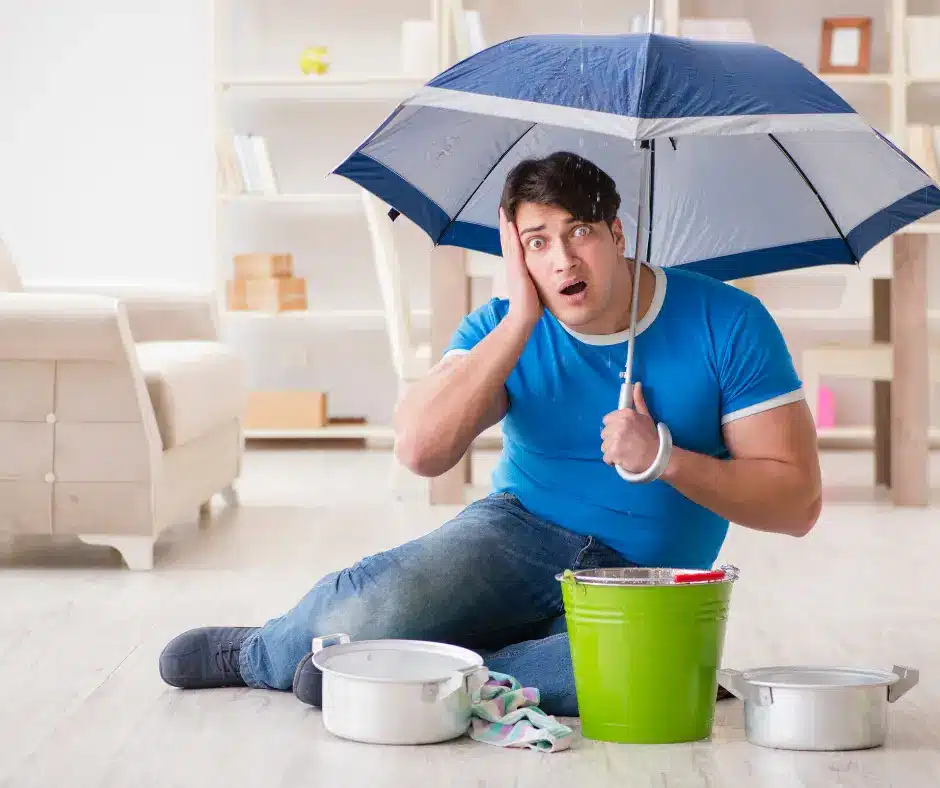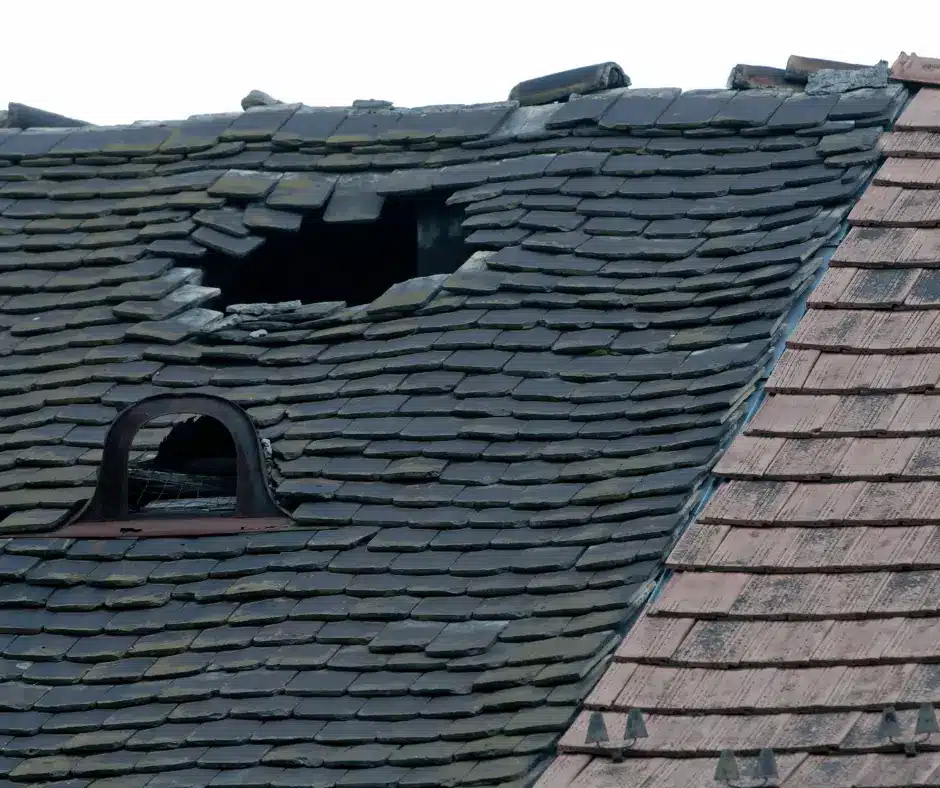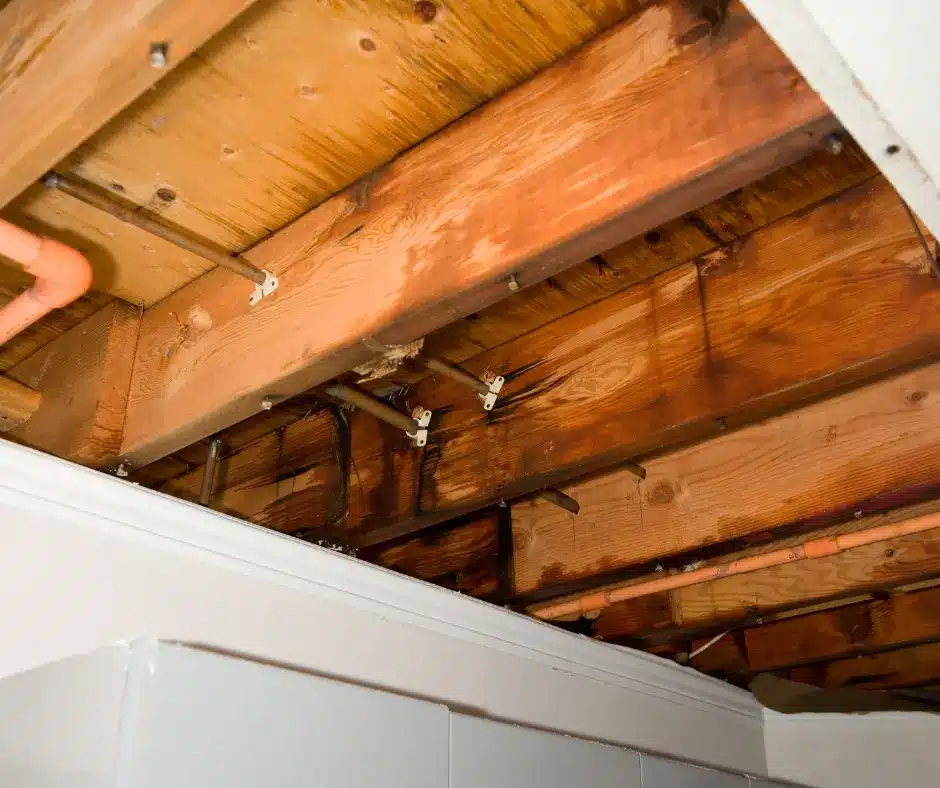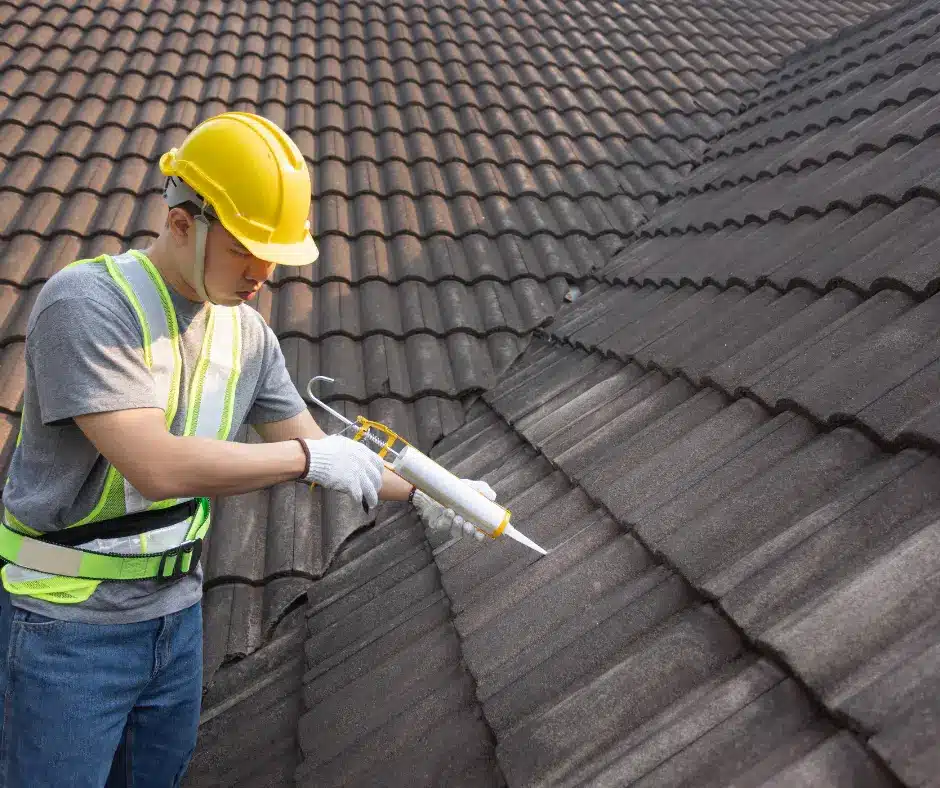Roof Leaks: What Are The Causes And How To Prevent Them

You wake up to the sound of water dripping. A quick investigation reveals a new water stain on the ceiling. Upon heading up to the attic, you discover the culprit – roof leaks.
Roof leaks can occur for various reasons, from aging materials to extreme weather. According to a 2022 study by the National Roofing Contractors Association, inadequate roof maintenance is the leading cause of leaks.
With proactive steps like regular inspections and prompt repairs, you can help prevent leaks. Installing quality materials correctly the first time and maintaining proper attic ventilation also reduce your risk.
Take control over your roof’s condition. A little prevention goes a long way toward protecting your most valuable asset – your home.
What Causes Roof Leaks in Winnipeg?
Extreme Weather Conditions
Winnipeg experiences extreme weather conditions, with long, frigid winters and hot, humid summers. These temperature extremes, combined with heavy rainfall, snow, and ice dams can damage your roof over time and lead to leaks.
According to studies, nearly 70% of all roof leaks are caused by ice dams in Winnipeg. An ice dam is a ridge of ice that forms at the edge of a roof and prevents melting snow from draining properly. The water can then back up under the shingles and into your attic or walls.
Improper Roof Ventilation
Proper attic ventilation is important for preventing excess heat and moisture buildup, which can damage your roof. Inadequate roof ventilation, especially in the hot Winnipeg summers, can cause the shingles and flashing to warp or buckle, creating openings for water to seep in.
Faulty or Damaged Materials
Over time, roofing materials naturally deteriorate and break down due to weather exposure. Shingles start to curl, crack, or become loose, flashings corrode, and seals or caulking break apart. These defects allow water to penetrate the roof, even from light rain. It’s a good idea to have your roof inspected regularly, especially if your roof is over 10-15 years old. Minor repairs or a roof replacement, if needed, can help prevent costly water damage in the future.
Improper Installation
If your roof is not installed properly according to the manufacturer’s specifications and local building codes, it will be prone to leaks prematurely.
Things like overlapped shingles, exposed nail heads, unsealed seams or skylights, and inadequate attic ventilation are common installation defects that lead to roof leaks.
For the best protection, always hire a reputable, certified roofing contractor like All Weather Exteriors to install or repair your roof.
With extreme weather, lack of ventilation, deteriorating materials, and improper installation all contributing to roof leaks in Winnipeg, regular roof inspections and maintenance are the best way to identify issues early and prevent costly damage to your home.

How to Detect a Roof Leak
It’s important to know how to find roof leaks early to avoid costly damage. Some signs to look for include water stains on ceilings and attic floors, musty smells, and visible water dripping. If you notice any of these, contact a roofing professional immediately for an inspection.
Water Stains. Water stains on ceilings and attic floors often indicate an active leak. The location of the stain can help pinpoint the source, which may require attic exploration. According to studies, roof leaks account for over 50% of all attic water damage.
Musty Smells. Musty, moldy smells in the attic or top-floor rooms suggest excess moisture which could signal a roof leak. Never ignore musty smells, as mold growth can become a serious health issue.
Visible Water. Visible water dripping from the attic, dripping onto insulation, or pooling on the floor means there is an open pathway for water to enter. This requires emergency repair to avoid structural damage. According to All Weather Exteriors, Winnipeg’s leading roofing contractor, unaddressed dripping water can lead to thousands in damage within weeks.
Regular Inspections. The best way to detect roof leaks early is through regular inspections. All Weather Exteriors recommends homeowners inspect attics and rooflines at least twice annually and after major storms.
Look for signs of water damage, and check all areas of potential leakage like skylights, plumbing stacks, and the chimney base. Early detection of minor leaks can help avoid costly repairs from water damage.
With regular inspections and prompt repair of any issues, homeowners can maintain a leak-free roof and peace of mind. But at the first sign of a leak, contact a professional to inspect, diagnose, and remedy the problem.
A small leak today could become an expensive catastrophe tomorrow if left unaddressed.

Preventing Roof Leaks With Proper Roof Maintenance
Regular Roof Inspections
According to studies, over 90% of roof leaks are caused by inadequate maintenance and neglect. As a homeowner, inspecting your roof regularly is one of the best ways to prevent leaks and other damage.
Walk around the exterior of your home at least once a season and look for any visible signs of wear or damage, such as curling or cracked shingles, rust spots, or water stains. It’s best to do inspections after heavy rains when leaks are most likely to appear.
If you notice any concerning issues, contact a professional to inspect and repair or replace damaged materials.
Clearing Debris
Leaves, twigs, and other debris that build up on your roof can retain moisture and speed up deterioration. They can also clog gutters and downspouts, preventing proper water runoff.
Use a rake, or leaf blower, or hire a professional to clear your roof of debris, especially in the fall. Clogged gutters should be cleaned out to allow water to flow freely off the roof.
Sealing and Repairing
Once you’ve inspected your roof and cleared any debris, look for any areas that need sealing, patching, or repairs. Seal around chimneys, skylights, and vent pipes where leaks often form. Patch or replace damaged or missing shingles or flashing. Re-seal the edges and seams of metal roofs.
These types of minor repairs and touch-ups can go a long way in preventing leaks and further damage. For larger issues, it’s best to contact a licensed roofer to handle necessary repairs or replacements.
Following a regular maintenance schedule for your roof is the most effective way to prevent leaks, increase its lifespan, and save on costly repairs down the road. Staying on top of inspections, clearing debris, and sealing or repairing minor damage will help ensure your roof continues to protect your home from the elements for years to come.
With some basic upkeep, you’ll have peace of mind knowing leaks will be kept at bay.

Fixing a Leaking Roof – Temporary vs. Permanent Repairs
Temporary Repairs
If you notice water stains on your ceiling or water dripping inside your home, you likely have an active roof leak that needs attention. As a temporary solution, you can apply roof cement or roof sealant over the leak to patch the hole or crack. According to industry studies, roof cement can last 6-12 months.
However, this is not a permanent solution and the leak is likely to return, potentially causing further damage.
Permanent Repair Options
For a permanent solution, it is best to hire a professional roofing contractor to inspect the leak and make necessary repairs or roof replacement. There are several options to permanently fix or replace your leaking roof:
Re-flashing and Sealing – If the leak is caused by damaged or missing roof flashing around chimneys, skylights, or ventilation pipes, a roofer can re-flash and re-seal these areas. According to roofing experts, re-flashing can last 10-15 years if properly installed.
Patching and Coating – For minor surface damage like cracks or holes, roof cement or sealant can be applied and then coated with an elastomeric coating. Industry studies show coatings can last 5-10 years, providing a cost-effective solution.
Single-Ply Membrane – For commercial roofs, applying a single-ply membrane is a popular option. Membranes are durable, waterproof, and can last 15-25 years according to roofing professionals.
Roof Replacement – If your roof is older than 20 years or has significant damage, full roof replacement may be required. Asphalt and fiberglass shingles typically last 20-30 years. Metal roofs offer a longer lifespan of 40-70 years according to roofing experts.
No matter which option you choose, it is best to hire a reputable local roofing company like All Weather Exteriors to properly assess and fix your leaking roof.
They have the expertise, experience, and qualifications to provide you with a long-lasting solution so you can rest assured your home is protected from the elements.
FAQs About Roof Leaks: Your Top Questions Answered
As roofing contractors in Winnipeg for over 25 years, we frequently get asked questions about roof leaks by homeowners. Here are some of the most common FAQs we receive:
What causes roof leaks?
Watch out for these most common causes of roof leaks:
- Weathering and aging of the roof material. Asphalt and wood shingles typically need replacement after 15-30 years. Metal and tile roofs can last longer but still, experience leaks over time.
- Damage from severe weather like hail, wind, or ice. Storms can cause dents, cracks, and holes in the roof.
- Flashing issues around chimneys, skylights, and vent pipes. The flashing seals these areas to the roof surface but can come loose or corrode over time.
- Poor ventilation leads to excess moisture buildup. When hot, humid air cannot escape an attic, it condenses on the underside of the roof.
- Improper installation. If shingles or flashing are not installed correctly, leaks are more likely to develop.
How can I prevent roof leaks?
The best way to prevent roof leaks is through regular inspection and maintenance:
- Have your roof inspected annually and after major storms. Look for any visible damage, debris, or corrosion and repair or replace as needed.
- Ensure attic vents are clear and unobstructed. This allows for proper ventilation and prevents excess moisture.
- Trim back any overhanging tree branches. This prevents damage to the roof surface and allows for maximum sun exposure.
- Re-seal or re-flash any pipes, vents, or skylights as needed. Caulk, roof cement, or roof flashing tape can help re-seal these areas.
- Consider roof recoating or re-shingling an older roof. For asphalt shingle roofs, re-shingling before leaks start can help prevent interior water damage. Metal or tile roofs may benefit from a protective roof coating.
By following these tips for prevention and early detection of issues, you can help ensure a watertight roof and avoid costly damage from leaks. For any existing roof leaks or roof damage, be sure to contact a professional roofing contractor for prompt inspection and repair.

Get protected, no matter the season.
You now have the tools to identify and prevent the most common causes of roof leaks.
Stay vigilant in inspecting for damage after storms, and make repairs quickly to avoid further deterioration. Implement preventative maintenance like cleaning gutters and sealing joints. Invest in high-quality materials and professional installation for long-term leak protection.
Take proactive steps now, and you can avoid the hassle and costs of water damage down the road. Your diligence will pay off with peace of mind knowing your Winnipeg roof is built to withstand the elements.
Don’t Let Roof Leaks Leave You Drenched!
Winnipeg weather is unpredictable, but your roof shouldn’t be.
All Weather Exteriors, the most trusted roofing experts in Winnipeg, MB, offer comprehensive roof repairs and replacements to keep your home watertight, year after year.
From pinpointing leaks to flawless installations, our experienced team uses top-quality materials and delivers exceptional service, all at competitive prices.
Don’t wait for a drip to become a downpour! Contact All Weather Exteriors today for a free quote and experience the peace of mind a reliable roof brings.
Editor’s Note: This post was originally published on May 12, 2020. The last update was made on June 10, 2024, to reflect new information and insights.
Leave a Reply
You must be logged in to post a comment.

2 Comments